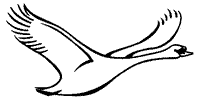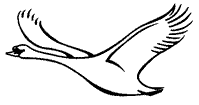WILD SWAN BOOKS

Total cost:
Designing & Building Layouts

Modelling:
Rolling Stock
Locomotives
Layout Design
Landscape
Techniques
Reference
James Hilton 104 pages Softback 2023
 In this book, James Hilton develops the ideas and themes of his earlier "Small Layout Design Handbook" around the notion that we could, or perhaps even should, consider and talk about our model creations in terms of their being "art". He starts off by explaining what he means and then considers how we construct and approach our models from an "artistic" perspective. Over half the book consists of newly developed layout themes, considered here as "stage sets", covering a wide range of prototype themes, including North American ideas and prototypes.
In this book, James Hilton develops the ideas and themes of his earlier "Small Layout Design Handbook" around the notion that we could, or perhaps even should, consider and talk about our model creations in terms of their being "art". He starts off by explaining what he means and then considers how we construct and approach our models from an "artistic" perspective. Over half the book consists of newly developed layout themes, considered here as "stage sets", covering a wide range of prototype themes, including North American ideas and prototypes.
Barry Norman 106 pages Softback 1997
 An original and inspiring book on how to design model railways. Drawing on experience gained with projects such as Inkerman Street and North Shields, the author gets right down to basic and useful features of design that can be applied to any model. A good idea are the photocopyable template sections to aid the planning process - an excellent book. On page 10 there is an excellent detailed view of a dairy siding, if anyone knows where the place was I would dearly like to know. The caption reveals no clues to its location although it looks like a Western Region installation to me.
An original and inspiring book on how to design model railways. Drawing on experience gained with projects such as Inkerman Street and North Shields, the author gets right down to basic and useful features of design that can be applied to any model. A good idea are the photocopyable template sections to aid the planning process - an excellent book. On page 10 there is an excellent detailed view of a dairy siding, if anyone knows where the place was I would dearly like to know. The caption reveals no clues to its location although it looks like a Western Region installation to me.
Bob Williams 120 pages Softback 2021
 Written by Bob Williams, Geoff's son, this fully illustrated book describes Geoff Williams famous EM model of the LNWR station in Aylesbury, the World's first branch line. The first section describes the building and restoration of the model and the second all of the research that went into creating it, including site photographs, maps, historic documents and sketches made by Geoff himself. The book features full signalling details, comprehensive photographic coverage of all related structures, together with extensive information on the trains that used the branch and how Geoff modelled them. Apart from being a great book on how to set about modelling any prototype, and the techniques you might use to create it, this is also a wonderful personal account of one man's lifetime and his hobby. Beautifully laid out and designed by Steve Phillips and including a real wealth of information on modelling techniques, including Geoff's very effective use of perspective modelling. Although I may be biased as I had a hand in producing it, I think this book is as good as anything that has ever been produced before in terms of explaining and conveying the satisfaction and joy to be had from immersing oneself in the wonderful hobby of railway modelling.
Written by Bob Williams, Geoff's son, this fully illustrated book describes Geoff Williams famous EM model of the LNWR station in Aylesbury, the World's first branch line. The first section describes the building and restoration of the model and the second all of the research that went into creating it, including site photographs, maps, historic documents and sketches made by Geoff himself. The book features full signalling details, comprehensive photographic coverage of all related structures, together with extensive information on the trains that used the branch and how Geoff modelled them. Apart from being a great book on how to set about modelling any prototype, and the techniques you might use to create it, this is also a wonderful personal account of one man's lifetime and his hobby. Beautifully laid out and designed by Steve Phillips and including a real wealth of information on modelling techniques, including Geoff's very effective use of perspective modelling. Although I may be biased as I had a hand in producing it, I think this book is as good as anything that has ever been produced before in terms of explaining and conveying the satisfaction and joy to be had from immersing oneself in the wonderful hobby of railway modelling.
Barry Norman 66 pages Softback 1986
 An inspiring book, visually pleasing but also very practical in its advice on techniques for model railway scenery. Although the author is very skilled, and the book illustrates some of the most convincing model scenes ever created, the author does not "talk down" to the beginner and the methods and ideas he describes are easy to understand and adopt.
An inspiring book, visually pleasing but also very practical in its advice on techniques for model railway scenery. Although the author is very skilled, and the book illustrates some of the most convincing model scenes ever created, the author does not "talk down" to the beginner and the methods and ideas he describes are easy to understand and adopt.
James Hilton 80 pages Softback 2024
 Something a little different and a bit of a publishing "experiment" from the publisher and author's point of view. An indulgently illustrated collection of a wide ranging selection of model railways, each accompanied with limited words from their creators that seek to "distil the essence" of what each creation is about. Subjects really are varied, and a few of the compositions have even moved away from the "minimum size" sorts of essays that James himself is well known for. There are quite a lot of James own creations here (nothing wrong with that), in a way this is to "get the ball rolling" as it is hoped to produce similar volumes in the future featuring the work of others in this fabulous hobby of ours. It has been produced to a high quality to the same format as James earlier books, and the print run is limited as the book may be seen as a bit "niche" by some. The images speak for themselves I think, they show some really creative approaches to different subjects and offer views and angles of model railways that you just do not get in any of the current mainstream magazines.
Something a little different and a bit of a publishing "experiment" from the publisher and author's point of view. An indulgently illustrated collection of a wide ranging selection of model railways, each accompanied with limited words from their creators that seek to "distil the essence" of what each creation is about. Subjects really are varied, and a few of the compositions have even moved away from the "minimum size" sorts of essays that James himself is well known for. There are quite a lot of James own creations here (nothing wrong with that), in a way this is to "get the ball rolling" as it is hoped to produce similar volumes in the future featuring the work of others in this fabulous hobby of ours. It has been produced to a high quality to the same format as James earlier books, and the print run is limited as the book may be seen as a bit "niche" by some. The images speak for themselves I think, they show some really creative approaches to different subjects and offer views and angles of model railways that you just do not get in any of the current mainstream magazines.
Gordon Gravett 112 pages Softback 2013
 Gordon moves on to ground cover in his third book on scenic techniques for Wild Swan, setting out to demonstrating how a scene can be brought to life through the use of scatters, fibres, grits and powders. He gives some thought to the issue of colouring and also covers wild flowers, hedges, puddles, wet areas and rivers. Superb all colour photography throughout and illustrated with examples of Gordon's very believable work.
Gordon moves on to ground cover in his third book on scenic techniques for Wild Swan, setting out to demonstrating how a scene can be brought to life through the use of scatters, fibres, grits and powders. He gives some thought to the issue of colouring and also covers wild flowers, hedges, puddles, wet areas and rivers. Superb all colour photography throughout and illustrated with examples of Gordon's very believable work.
Gordon Gravett 92 pages Softback 2011
 An all colour guide to how Gordon Gravett creates his exquisite model trees, covering observation of the prototype, placing trees into a model scene and of course actually creating the models. Well written, beautifully observed, and a genuinely practical guide to modelling, detailing methods and materials in both words and clearly presented pictures. There are some really innovative ideas in here too, for example a nifty way of making birds nests and mistletoe. A really attractive book, even when judged by the high standards of this publisher.
An all colour guide to how Gordon Gravett creates his exquisite model trees, covering observation of the prototype, placing trees into a model scene and of course actually creating the models. Well written, beautifully observed, and a genuinely practical guide to modelling, detailing methods and materials in both words and clearly presented pictures. There are some really innovative ideas in here too, for example a nifty way of making birds nests and mistletoe. A really attractive book, even when judged by the high standards of this publisher.
Gordon Gravett 92 pages Softback 2012
 In this book Gordon makes a good case for conifers in the English landscape and then explains how to replicate them in miniature. Whilst some of the techniques are the same as for broadleaf varieties, Gordon highlights a number of novel methods that can produce stunningly good results. The whole is well illustrated in colour with both model and actual tree shots and the actual modelling methods and materials used, Well written and readable, this is another delight from one of our most talented modellers and foremost publishers.
In this book Gordon makes a good case for conifers in the English landscape and then explains how to replicate them in miniature. Whilst some of the techniques are the same as for broadleaf varieties, Gordon highlights a number of novel methods that can produce stunningly good results. The whole is well illustrated in colour with both model and actual tree shots and the actual modelling methods and materials used, Well written and readable, this is another delight from one of our most talented modellers and foremost publishers.